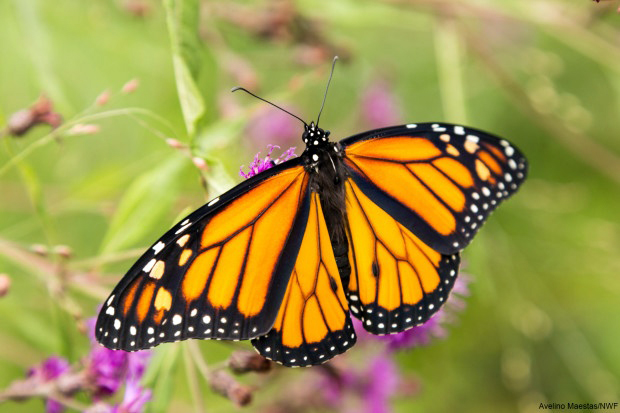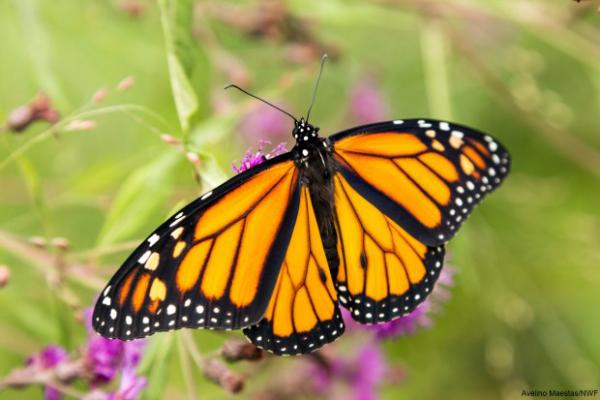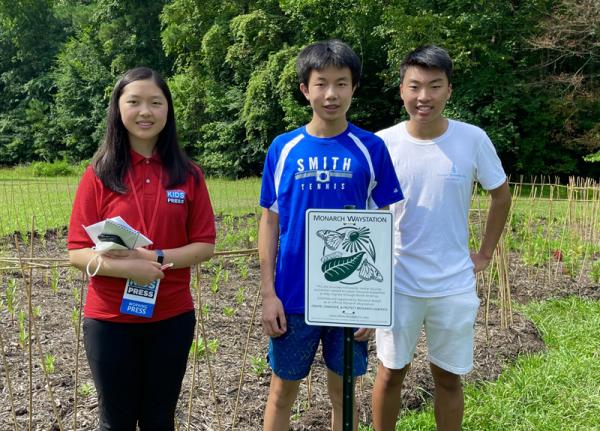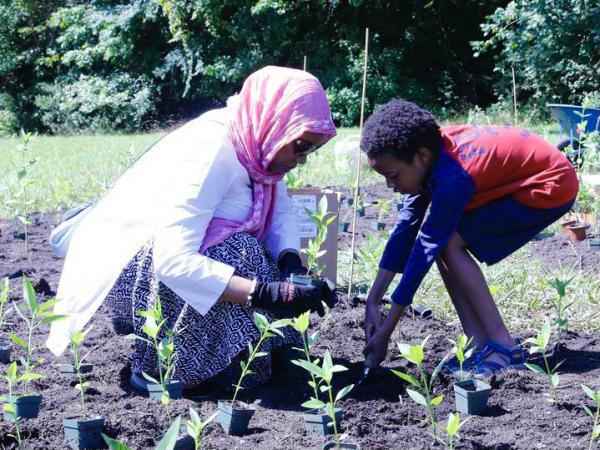KID REPORTERS’ NOTEBOOK
The Great Monarch Migrations


A monarch butterfly rests on a flower.
Monarchs are the only butterflies known to make two-way migrations, as birds do. The annual migration of the eastern North American monarch butterfly is the most highly evolved of any known species of their kind. These butterflies can travel up to 3,000 miles in their short lifetime.
In the late summer and early fall, the butterflies typically leave southern Canada and northern and central regions of the United States. They make a dangerous trek to Florida and Mexico, where the weather is warmer.
In recent years, monarch populations have been declining dramatically. In California, the population has decreased by 99.9% according to the Xerces Society, an invertebrate conservation organization.

Teresa talks with Kevin Guo, center, and Raymond Zhao, members of the Monarch Butterfly Club at East Chapel Hill High School, about their monarch waystation garden.
THE “SUPER GENERATION”
A monarch butterfly has four stages of life: the egg, larvae (caterpillar), pupa (chrysalis), and adult butterfly. No individual butterfly can make the entire migration, which may require four or more generations to complete.
“During their fall migration, the fourth generation of monarchs—known as the super generation—leave their summer breeding habitats and travel south to warmer places, where they can also find food and shelter,” explained Rebeca Quiñonez-Piñón, the chief monarch strategist at the National Wildlife Federation.
But the future of these butterflies is in peril. According to Quiñonez-Piñón, “the decline of the monarch population has been the consequence of habitat loss and fragmentation–due to urbanization and conversion of land into crops.”
The butterflies are reliant on the food they consume as caterpillars, so climate change and pesticides are causing harm, too. “We must all work together to ensure the monarchs can find enough places with sources of food, shelter, and water,” Quiñonez-Piñón said.

Community members in Chapel Hill, North Carolina, came together this summer to plant milkweed and flowers.
TEENS IN NORTH CAROLINA HELP OUT
To help save the monarchy butterfly population, teens in my North Carolina community formed a club. The Monarch Butterfly Club at East Chapel Hill High School successfully applied for land from the town council for the monarchs’ protection. Club members hope that the garden they created will be a safe resting and feeding place for the monarchs during their long migration. The students plan to secure more land from the community in the future.
This summer, the club held events for the community. Residents of Chapel Hill were able to help club members plant milkweed, which larvae eat exclusively.
“We tell people about the club and our goals to raise awareness,” said member Kevin Guo, 16. “We’re hoping this can make a change and cause people to do more for the butterflies.”
According to club member Raymond Zhao, also 16, the situation is urgent. “By now, it’s clearly noticeable that there are a lot fewer butterflies this year,” he said.
Raymond has been planting milkweed in his own backyard for the past few years. “In the future, we might [get] more schools or clubs into this,” he said. “We need all the help we can get.”
